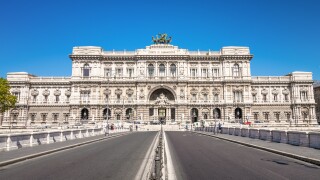Italy
Whether it be due to a fragmented advisory market or a rise in M&A, Italy’s frenetic hiring has not gone unnoticed by ITR’s Talent Tracker
Scott Bessent reportedly felt undermined by Musk naming Gary Shapley as acting IRS commissioner; in other news, Baker Tilly will combine with a top 15 US firm
Despite garnering significant revenues from multinationals, Italy’s digital services tax presents pressing double taxation issues, say Stefano Simontacchi and Francesco Saverio Scandone of BonelliErede
The ruling is ‘well-structured’ in its references to the OECD TP guidelines, one expert says, while another argues it overlooks key technical issues
Sponsored
Sponsored
-
Sponsored by Hager & PartnersIn recent years multinational groups have, sensibly, modified their business models to keep up with globalisation and safeguard their competitiveness.
-
Sponsored by Hager & PartnersEnforced in 2015, the Italian patent box regime is an optional tax benefit allowing reduced tax for income arising from the direct or indirect use of IP assets by companies and commercial entities performing research and development activities.
-
Sponsored by Hager & PartnersItaly has implemented a growth decree designed to encourage research & development (R&D). Hager & Partners' Gian Luca Nieddu and Barbara Scampuddu discuss the key tax implications of the decrees 32 articles.
Article list (load more 4 col) current tags











